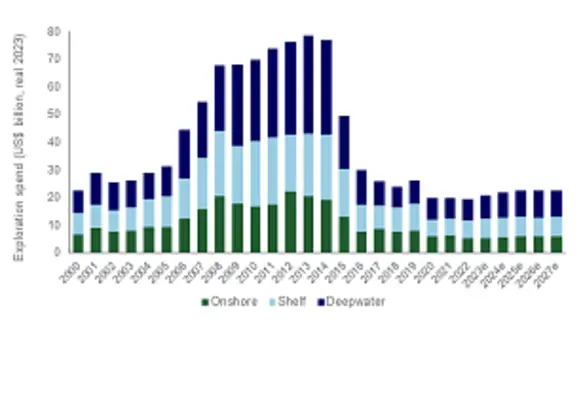Spending on exploration (excluding appraisal) will recover from historic lows to average US$22bn per annum in real terms over the next five years, according to a new report from Wood Mackenzie, although it is unlikely to reach past highs
Attractive exploration economics, the need for energy security and the emergence of new frontiers are contributing factors, according to the report, titled “Exploration quietly recovering”.
“Explorers will become bolder in the coming years,” said Julie Wilson, director of global exploration research at Wood Mackenzie. “While this rebound might surprise some, it must be seen in context. Exploration went through a boom during 2006-2014 and spend peaked at US$79 bn (in 2023 terms). But in the prior six years, the average was US$27bn per year in 2023 terms. While spending will increase, it won’t return to anywhere close to past highs and there will likely be a ceiling on the increase. There is a lack of high-quality prospects that would satisfy today’s economic and ESG metrics and a continued focus on capital discipline will keep a lid on overspending.”
In 2023, spending is projected to increase 6.8% over 2022 totals (in real terms). A major driver for this increased activity is the robust business case. According to Wood Mackenzie, full-cycle returns from exploration have been consistently above 10% since 2018 and exceeded 20% in 2022.
“These positive results have increased confidence in exploration,” continued Wilson. “Improved results are down to many factors. Portfolio high-grading coupled with greater discipline in spending and prospect choice mean only the best prospects are drilled and waste is minimised. Efficiency gains also serve to enhance the returns from both development and exploration.”
In the long term, deepwater and ultra-deepwater will provide the most growth opportunities for exploration, the report says, with the Atlantic Margin of Africa and the Eastern Mediterranean regions experiencing the greatest growth.









